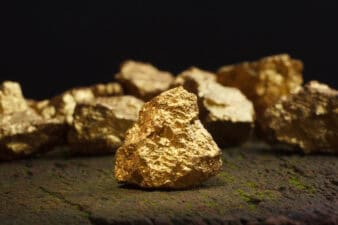Potash Corporation of Saskatchewan Inc.’s (TSX:POT)(NYSE:POT) woes are far from over yet. A couple of weeks ago, Moody’s Investor Service, a leading credit rating and research firm and a subsidiary of Moody’s Corporation downgraded Potash Corp.’s credit rating to Baa1 from A3, highlighting the mounting pressure to grow its earnings amid weak fertilizer markets.
Unfortunately, Potash Corp. might have just confirmed the fears by announcing a fresh round of layoffs.
What exactly does Moody’s downgrade mean?
A credit rating typically depends on a company’s creditworthiness and financial capabilities to meet debt obligations. Moody’s A rating is usually the lowest investment-grade rating, but it indicates low default risk on debt and, hence, isn’t too worrisome.
The Baa rating is one notch lower, signifying “moderate” credit risk. Moody’s has primarily downgraded Potash Corp.’s senior unsecured bonds. As of September 30, 2016, the company held nearly $3.8 million worth in senior notes.
While downgrading Potash Corp.’s ratings, Moody’s Investor Service’s senior vice president John Rogers said, “Although management has taken significant steps to retain the A3 rating, market conditions will make it extremely difficult for the company to generate credit metrics that would support the A3 rating over the next two years.”
Simply put, Moody’s foresees Potash Corp.’s credit metrics will weaken in the near future. Broadly speaking, credit metrics are financial numbers and ratios used to assess credit risk, such as margins, interest coverage, capital structure, and so on.
Why did Moody’s downgrade Potash Corp.?
Moody’s is worried about the prolonged weakness in fertilizer markets. Prices of all three key nutrients–potash, nitrogen, and phosphate–have plunged in recent years on low demand. The situation is unlikely to improve any time soon as additional capacity from ongoing expansion projects hits the market. That could exacerbate the imbalance between demand and supply and cap fertilizer prices.
As long as fertilizer prices remain weak, Potash Corp. will struggle to grow its profits, making it even more difficult for the company to service its interest payments and maintain the dividend.
What should investors do now?
Potash Corp. has lost almost three-quarters of its profits in the past three years as fertilizer prices tumbled. In fact, low prices pushed its gross profits down a whopping 65% during the first nine months of this year, even compelling the company to slash its dividends. So investors shouldn’t expect Potash Corp.’s fortunes to turn around until prices recover.
Unfortunately, there’s little hope for now. Just days ago, Potash Corp. announced further production cuts at one of its potash mines, confirming that the worst may not be over yet.
Potash Corp.’s merger with Agrium Inc. (TSX:AGU)(NYSE:AGU) could be a saving grace as it’ll reduce its exposure to the volatile fertilizer markets. However, the merger is still awaiting regulatory approval.
More importantly, there’s no clarity yet about the potential savings and benefit to Potash Corp.’s financials from the merger. That’s also why Moody’s still has Potash Corp.’s ratings “under review for downgrade.” That suggests investors shouldn’t get too optimistic about Potash Corp. yet.




